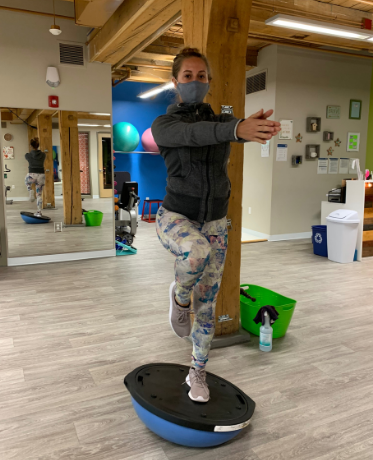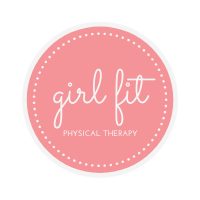


FHL tendonitis, or FHL tendinopathy, refers to an irritation of the FHL tendon, typically due to overuse. The FHL, or flexor hallucis longus, is a muscle located in the back of the lower leg which flexes the great toe (big toe). The FHL tendon travels from the back of the lower leg behind the medial malleolus (inside ankle bone) and through a space called the tarsal tunnel. Next, it travels through the medial arch (“instep” or “arch” of the foot) and acts as a major stabilizer of the medial arch1. The FHL tendon helps to control both pronation and supination of the foot. The primary function of the FHL is to flex the great toe, where the tendon inserts.
FHL tendonitis is often called “Dancer’s Tendonitis”2 due to its prevalence in dancers, which is higher in ballet than in any other sport3. However, FHL tendonitis does occur in many other sports, including track, soccer, gymnastics, figure skating, cheerleading, and swimming to name a few. Pain often occurs behind the medial malleolus, along the medial arch of the foot, or under the great toe. Some athletes feel a “catching” or a “crunchy” sensation at the great toe toe or behind the medial malleolus with certain movements. Other causes of posterior ankle pain (pain in the back of the ankle) in dancers and other athletes include posterior ankle impingement, posterior tibial tendinopathy, and osteochontritis dissecans (OCD)2. Causes of posterior ankle pain can also be complicated by the presence of an Os Trigonum.

The exact physical cause of FHL tendonitis continues to be researched. However, repetitive forceful push off by the great toe is typically considered a contributing factor to FHL tendonitis. This stress placed on the FHL tendon can be exacerbated by excessive pronation, medial arch collapse, and eversion of the foot (outward position of the toes and lower foot relative to the ankle). Excessive pronation can occur for many reasons. One frequent contributing factor is weakness of the hip, lower extremity, and core musculature. Lack of control at the hips, pelvis, and trunk causes a chain effect down the lower extremity. This results in changes in foot posture, mechanics, and control and can increase stress placed on structures such as the FHL.
In dancers, excessive eversion and pronation of the foot can both occur when a dancer “forces” turnout or does not have the hip strength to control their turnout. Overuse of the FHL can also occur when a dancer, figure skater, or other athlete “grips” their toes during a releve in dance, in their skate as a figure skater, etc.

As with any overuse injury, the first step is typically to decrease the load being placed on the irritated tendon to allow it to calm down. Being sports medicine physical therapists, we try hard not to just immediately sideline you from every aspect of your sport. We would prefer to help guide you in safely modifying specific skills, movements, or the volume of load being placed on the irritated tendon. This is one of the many reasons why it is important to find the best physical therapist for you. Your PT should take the time to dive deep into your movement and sport specific skills. They may also want to see your movements in your sport specific footwear so make sure to bring those to your PT evaluation when possible.
At Girl Fit Physical Therapy, our PTs are experts in working with female athletes. They can video your movements and slow them down. Then, they can measure exact angles, find asymmetries, and show those results to you. We understand the power of strong patient education and want you to understand your injury, why it occurred, and how to prevent it from coming back. After a thorough evaluation, your physical therapist will address any impairments in strength, range of motion, flexibility, posture, and body mechanics/movement patterns which may be contributing to increased stress on your FHL tendon.
We provide individualized care to each patient based on what is found in your physical therapy evaluation and the specific challenges of your sport. However, treatment will likely include strengthening of the foot musculature, as well as the muscles of the hip, lower extremity, and core. Your therapist will work with you on your “foot posture” to ensure you are optimizing your movement and power. This can then decrease the stress on your FHL tendon. If you are instructed to rest from a specific activity, your physical therapist will guide you through a return to sport progression. This will allow for safe gradual loading of your tendon and long term success in returning to your sport.
In addition to strengthening, posture, movement analysis, and load management, your treatment may also include manual therapy4. Typically manual therapy will be utilized more at the beginning of your treatment. Then gradually the need for manual therapy will be decreased as your symptoms improve and you work toward independence. Manual therapy interventions could include soft tissue massage (don’t let the name fool you! “Soft tissue” just means pliable tissues like muscles), joint mobilization, Graston technique, cupping, or trigger point dry needling. Your therapist will guide you through the best path of treatment based on your specific needs and the most current evidence based practice.
Your initial evaluation will almost always include the creation of a home exercise program. This program will start with some top priorities and grow with each of your sessions as your symptoms improve and as your therapist continues to address every contributing factor. Your home exercise program will grow to become your long term maintenance program to continue when you “graduate” from physical therapy.
While we may ask you to perform your home exercise program every day at the start of physical therapy, we understand the importance of getting to a more sustainable long term plan. Putting in the work at the beginning of your treatment will set you up for a smooth recovery and the quickest, safest return to full participation in your sport. We want you to graduate physical therapy with an understanding of why you are doing each exercise. We’d also love for you to know a few options of different exercises which work the same muscles. That way you can create fun and interesting workouts on your own!

First, don’t continue to push through the pain. Overuse injuries will almost never just go away on their own if you ignore them. Getting treatment quickly can typically lead to the smoothest, easiest, and quickest rehab and return to full sport.
To schedule a physical therapy evaluation with one our specialized physical therapists at Girl Fit just give us a call at 617-618-9290 or email us at office@girlfitPT.com. If you aren’t in pain, but would like an evaluation of your strength, flexibility, posture, movement, and sport specific skills you can schedule a Wellness Visit with one of our physical therapists. They will work with you to create an injury prevention program, provide you with guidance on training and load management, and answer all of your questions about preventing injuries and enhancing performance in your sport.
We are offering physical therapy and Wellness Visits both in person and via Telehealth physical therapy. We’d love to help you keep those FHLs (and everything else!) in tip top shape!
Kate Hamilton, PT, DPT
Orthopedic Clinical Specialist
Follow us on Instagram @girlfitrocks

1. Femino JE, Trepman E, Chisholm K, Razzano L. The role of the flexor hallucis longus and peroneus longus in the stabilization of the ballet foot. J Dance Med Sci. 2000;4(3):86–89.
2. Luk P, Thordarson D, Charlton T. Evaluation and management of posterior ankle pain in dancers. J Dance Med Sci. 2013;17(2):79-83.
3. Kadel NJ. Foot and ankle injuries in dance. Phys Med Rehabil Clin N Am. 2006;17:813-826.
4. Wentzell M. Conservative management of a chronic recurrent flexor hallucis longus stenosing tenosynovitis in a pre-professional ballet dancer: a case report. J Can Chiropr Assoc. 2018 Aug;62(2):111-116.

